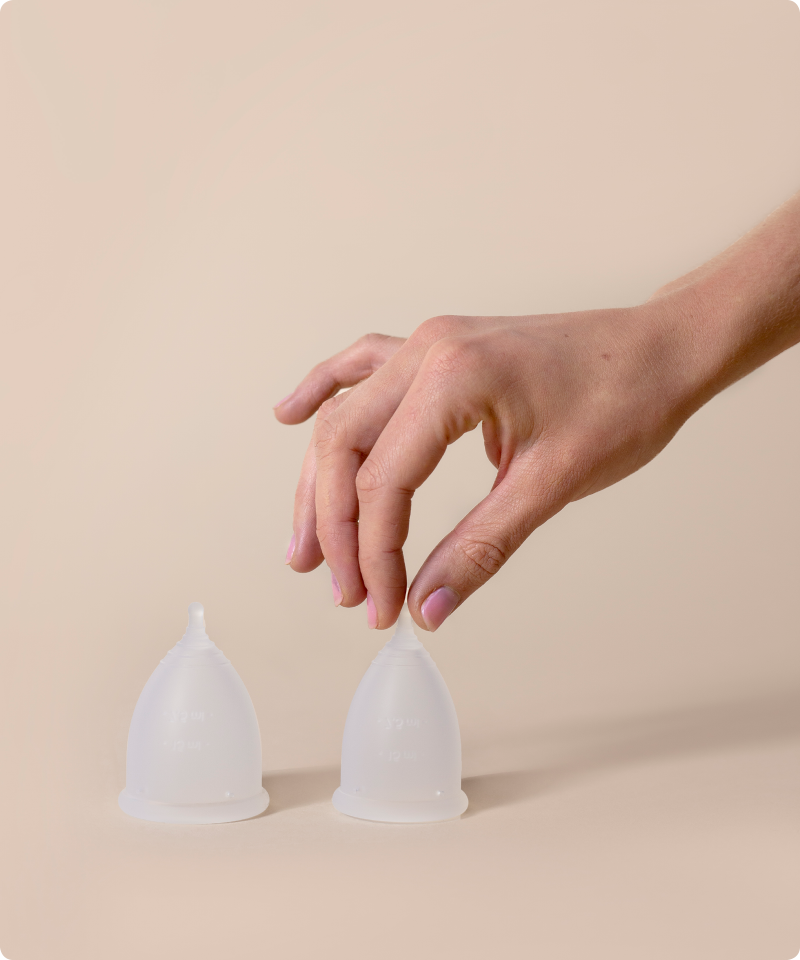The real truth about kegel exercises
If you do a lot of yoga or if you’ve just delivered a baby, you’ll probably know where to find them. For most other people it’s usually a big mystery where the pelvic floor muscles are and what they actually do. But honestly, it’s not that strange if you don’t know it either! Our brain contains an extensive mirror of everything that happens in your body, but only a tiny spot is reserved for sensing movements in the pelvic floor muscles. You can compare it with your fingers. A lot of space has been made available in your brain for this, so that you are very aware of the movements of your fingers.

An important role during sex
Maybe you're feeling a bit lost right now, but you don’t have to worry, like we said, most people don’t know a lot about their pelvic floor muscles. About 30% of the women can’t find their pelvic floor muscles or tighten them incorrectly. That’s why we’ll give you a little anatomy lesson first: the pelvic floor is a kind of muscular hammock that sits at the bottom of your abdomen, around the anus, vagina and urethra. You can find it by inserting a finger into your vagina and softly squeezing your finger with your vagina. Don’t squeeze too hard, because then your abs and glutes will take over. The pelvic floor muscles keep the organs in place. When you tighten them, they close the urethra and anus, so you don’t accidentally pee yourself or pass wind when you sneeze, cough, laugh or exercise. They also play an important role during sex, usually in a positive way but not always. Well-trained pelvic floor muscles can make sex and orgasms way better. For example, you can increase the intensity of your orgams by tightening the pelvic floor muscles.
You can compare the pelvic floor muscles with a rubber band. When a rubber band is too tight it doesn't give way, but if it’s not tight enough it also doesn’t work the way it should. The same thing applies to your pelvic floor muscles. When they are too weak it can cause unwanted urine loss (which affects half of all women to a greater or lesser extent), less natural fluid production and a less pleasant or intense orgasm. The entrance of the vagina can also become too wide, causing you to not feel much down there during penetration. If the pelvic floor is prolapsed, organs such as the uterus drop downalong with it and this can also make penetration painful. But you also don’t want your pelvic floor muscles to be too tight. You might feel a burning sensation or pain during penetration. Penetration might not even be possible at all, then you’re talking about a condition called vaginismus.
Let’s get ready to work
Strong pelvic floor muscles that you can tighten and relax whenever you want have plenty of benefits. So it’s time to start training them!You can do different kegel exercises - named after the gynecologist who invented them -to strengthen your pelvic floor muscles. These aren’t the easiest exercises but it’ll be fine once you figure out how to do them. Some examples:
exercise 1
Lie on your back with your knees pulled up and your hands loosely at your sides. Inhale slowly until your belly expands. Exhale and try to lift up your pelvic floor inside you starting at your tailbone, as if you were zipping up your skinning jeans. Be careful that your tailbone doesn’t come off the ground. For the next three breaths, keep your pelvic floor muscles tense and then slowly release the tension. Repeat this exercise 10 times.
exercise 2
Lie on your back again and slowly inhale until your belly expands. As you exhale, lift up your pelvic floor just like in the previous exercise. Hold the tension for three breaths but this time, release the tension in three equal steps.
exercise 3
It’s the same exercise again, but this time you also tighten your pelvic floor muscles in three equal steps. It helps if you think of it like an elevator that stops on the first floor and then on the second floor and so on. You hold the tension for a while on each new floor. On the way back - when you’re releasing the tension - you also stop at each floor.
You can also do these exercises sitting, standing, or on your hands and knees. Try to properly relax after each exercise, so that you can recognize the difference between tightening and relaxing.
Ben Wa balls and Kegel weights
What’s also very effective are kegel weights or Ben Wa balls. In 2001, a study was conducted and results showed that using Ben Wa balls for 15 minutes a day for 12 weeks can help with incontinence. Some of the women in the study even fixed their incontinence problem completely. You can surely imagine this can also have an effect on your sex life. The kegel weights are a modern version of these balls. You start with a large, light type and work your way up to a smaller, heavier one.
You can also train the other way around. With a so-called dilation set you can gradually practice relaxing the pelvic floor muscles and become familiar with penetration again. These kinds of sets usually consist of weights of different sizes and thickness, often made of soft silicone. You start by inserting the smallest and slowly work your way up to a larger weight. Another thing you can also do is lie down on your back and roll a tennis ball firmly over your lower abdomen and pelvic area, so that this will loosen the muscles. Breathing exercises and hypnotherapy have also been proven to be effective, so you might want to give these options a try.
We advise you to not just start doing these exercises randomly but to consult an expert first. Go to a pelvic floor physiotherapist, gynecologist or urologist (via your GP). They can give you the advice and guidance you need.
You can find a (dutch) pelvic floor physiotherapist in your area via www.bekkenfysiotherpie.nl


























